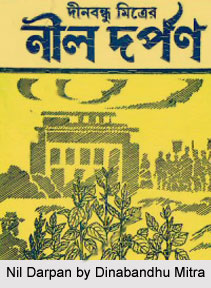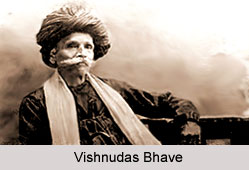 History of modern Indian theatre depicts one of the productive phase in Indian theatre. Modernity of Indian theatre reached on the coattails of the British Raj in the mid-nineteenth century. As a result there were sweeping changes in theatre stages of India over the next hundred years, until 1947 and perhaps the subsequent decade, so that the only accurate adjectives for the following fifty years up till now can be post-modern, postcolonial or even contemporary. It is somewhat easy to determine the beginnings of modernism in Indian theatre, because the shift from pre-modern forms to modern ones here is so clearly distinguishable. Chronologically, too, it seems to nearly coincide with that turning point in Indian history, 1857, the First War of Indian Independence. However, modernism in theatres took some time to reach some theatre regions, as late as the mid-twentieth century - in alphabetical order, Dogri theatre, Kashmiri theatre, Konkani theatre, Maithili theatre, Manipuri theatre, Rajasthani theatre and Sindhi theatre.
History of modern Indian theatre depicts one of the productive phase in Indian theatre. Modernity of Indian theatre reached on the coattails of the British Raj in the mid-nineteenth century. As a result there were sweeping changes in theatre stages of India over the next hundred years, until 1947 and perhaps the subsequent decade, so that the only accurate adjectives for the following fifty years up till now can be post-modern, postcolonial or even contemporary. It is somewhat easy to determine the beginnings of modernism in Indian theatre, because the shift from pre-modern forms to modern ones here is so clearly distinguishable. Chronologically, too, it seems to nearly coincide with that turning point in Indian history, 1857, the First War of Indian Independence. However, modernism in theatres took some time to reach some theatre regions, as late as the mid-twentieth century - in alphabetical order, Dogri theatre, Kashmiri theatre, Konkani theatre, Maithili theatre, Manipuri theatre, Rajasthani theatre and Sindhi theatre.
But to rewind to the beginning, mere importation of the proscenium arch in itself did not herald modern Indian theatre, for the Playhouse (Kolkata, 1753) and Bombay Theatre (1776) catered exclusively to the small British populations in those harbour towns. Although the Russian bandleader Herasim Lebedeff opened his Bengali Theatre (Kolkata, 1795) with two Bengali productions, it proved a cul-de-sac that did not lead to a stage tradition either directly or indirectly. Since the British brought modern ideas to India, quite appropriately, the first `modern` Indian play was written in English by Reverend Krishna Mohan Banerjee in 1831 - The Persecuted, or Dramatic Scenes Illustrative of the Present State of Hindoo Society in Kolkata - though it was neither staged, nor did it inspire any successors.
Another milestone on the road to modern theatre passed in 1853, when Vishnudas Bhave presented in Marathi language the first ticketed shows for native audiences at the Grant Road Theatre, Mumbai. Professionalism is not a key factor in the emergence of modern Indian theatre because many traditional troupes performed as professionals.
 In Kolkata, the Bengali stage remained within the confines of private family theatres open only to invited audiences. But what the enlightened joint households of the Bengal Renaissance lacked by way of organized financial acumen, they amply compensated for by means of trailblazing drama. Some of them established competitions for original plays on socially relevant issues, which they then staged. This reformist zeal shaped frontline modernist theatre across the world.
In Kolkata, the Bengali stage remained within the confines of private family theatres open only to invited audiences. But what the enlightened joint households of the Bengal Renaissance lacked by way of organized financial acumen, they amply compensated for by means of trailblazing drama. Some of them established competitions for original plays on socially relevant issues, which they then staged. This reformist zeal shaped frontline modernist theatre across the world.
Consequently, by 1870 modernism was well under way, established thematically in eastern India and commercially in Mumbai. In 1872, the Kolkata stage also went professional, but in an absolutely unprecedented direction. From the inaugural production - Nil Darpan by Dinabandhu Mitra, about tyrannical indigo planters, was blatantly polemical and anti-British. Within four years the Bengali theatre outraged the colonial authorities so much that they passed the Dramatic Performances Act in 1876 to curb its subversive, seditious and provocatively patriotic tendencies. Like all the important elements of modernism, this legislation survives into post-modern times, virtually to the letter, as most state governments have not repealed it, ironically enough even invoking it to stifle their own opposition. In general, social and political plays comprise the core of meaningful Indian drama down to the present, definite legacies of modernism.
What has not lasted, however, is the mass appeal of theatre to Indians a hundred years ago. From the 1870s to 1930, theatre`s popularity touched its high-water mark in India, its place as favourite entertainment afterwards usurped by cinema and now perhaps by television. Modern Indian theatre in the West never attracted such a fervent following. In India, on the other hand, professional troupes rapidly evolved a formula combining melodrama with musical, which they used as a device to capture full houses and as an unlikely vehicle to express social or political messages when necessary.




